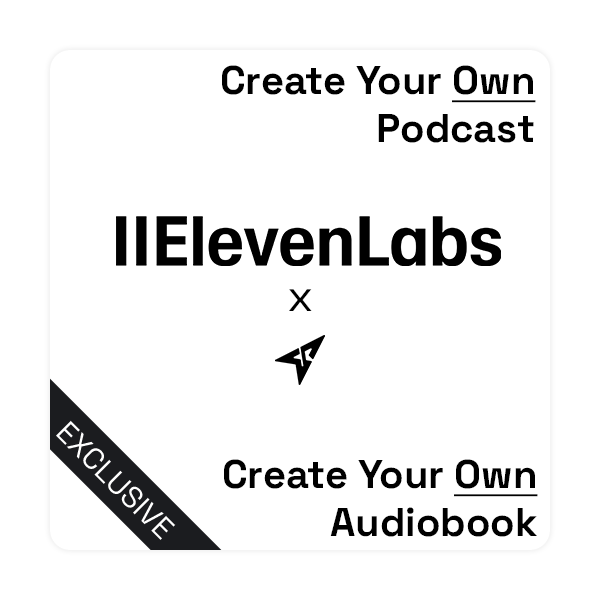Jessica: Why is it so hard to do the things we know are good for us? We make plans. We have good intentions. But then, we don't follow through. It happens again and again.
Arabella: It is a very common problem. We often think the answer is more willpower or more discipline. But the real problem might be our strategy. We do not have a clear plan that works with our human nature, not against it. Today, we’ll talk about a powerful way to change yourself from Katy Milkman's book, How to Change. It shows a scientific way to see why we hold ourselves back. Then, it helps us use that knowledge to make lasting changes.
Jessica: Welcome to Averstance Take. Let’s begin.
Arabella: The key idea is to change our behavior the way an engineer solves a problem. First, an engineer tries to understand the specific issue. Then, the engineer builds a solution for that issue. We should do the same for ourselves. We need to find the specific thing that stops us from changing. Then, we can pick the right tool to fix it.
Jessica: So, if I'm hearing you right, there isn't one simple answer for everyone. The main point is that we have to be detectives in our own lives. We have to figure out our unique problems before we can find our unique solutions. Is that correct?
Arabella: Exactly. For example, say you want to start meditating every night. The first step is to ask: What has stopped me before? The problem is that you get distracted by more fun things, like watching TV. That is a specific problem. The problem is a desire for immediate pleasure. So you need a solution for that specific problem. You could make a rule for yourself. You can only watch your favorite show after you finish your meditation. You are using your desire for pleasure to help you, not to hurt you.
Jessica: That makes sense. It sounds like a personal, tailored approach. But it also sounds like it’s all about our thinking. It treats changing ourselves like an intellectual puzzle. Does this approach miss anything? For example, what about our past? Difficult experiences from our childhood can impact our behavior in the present. It might take more than a clever strategy to work through that.
Arabella: That is a very important point. This framework is a practical guide for common challenges. It may not address deep-seated issues that need a different kind of healing. For the everyday barriers we all face, though, having a smart strategy is key. Another part of that strategy is timing.
Jessica: Timing? What do you mean by that?
Arabella: The best time to make a change is when you get a “new beginning.” This is a moment that feels like a fresh start. It could be a date, like New Year's Day or your birthday. It could be a big event, like starting a new job. Or it could be a new place, like moving to a new city.
Jessica: Why do these fresh starts help so much? What’s the logic behind that?
Arabella: It's because of how we see our own lives. We don't see our lives as one long, continuous line. We see them as a story with different chapters. A new beginning feels like turning the page to a new chapter. This feeling creates a psychological distance from our past failures. If you tried and failed to get fit last year, a new year makes that failure feel like it was part of an old story. Now you have a blank page. This makes you feel more hopeful.
Jessica: That makes me think of how some people write about their lives. They do this to understand themselves better. Writing a memoir can be like therapy. It helps people make sense of their past and move on. They are creating that psychological distance you mentioned on purpose. They are giving themselves their own “new beginning.” But are these fresh starts always a good thing? For instance, New Year's resolutions are a classic fresh start. But we also know that most of them fail within a few months.
Arabella: That’s true. A fresh start is not a magic pill. It gives you an opportunity, but it doesn't do the work for you. You are right about resolutions. People often do this out of obligation, not true willingness. The change has to be meaningful to you. Also, not all big changes are positive. A move to a new country can be a fresh start, but it can also be very stressful. Self-confidence is key. It must back up both the strategy and the timing.
Jessica: You mean believing that you can actually succeed?
Arabella: Yes. Our belief in our ability to change can make or break our efforts. Our expectations have real power. They affect us in four ways. First, emotionally, when you expect to succeed, you feel more energy. Second, attentionally. A positive outlook can make a hard task feel more enjoyable. Third, motivationally. Believing in the benefits of an action helps you follow through. And fourth, physiologically. Positive expectations can even change how your body responds to something.
Jessica: That idea, that our beliefs shape our reality, is powerful. It reminds me of the work of Tony Robbins in Awaken the Giant Within. He says our beliefs control our decisions, and our decisions create our lives. It starts with what we focus on. If you focus on thoughts like “I can do this,” you build positive beliefs. Those beliefs give you the energy to act. But what if someone doesn't have that confidence? What if they have a history of failing? Telling them to “be confident” doesn't help.
Arabella: That is where practical tactics come in. You can build self-confidence. One way is to form a support group with peers. When people teach and mentor each other, everyone's confidence gets a boost. Another way is to take time to remember your past successes. Think about how far you have already come. Give yourself credit for your accomplishments.
Jessica: I see how those could work. But those tactics seem to assume you have supportive people around you or a past full of clear wins. What if you feel like you have neither? Hearing that advice could actually make you feel worse. It seems like you would need a way to build confidence from scratch, even when you feel inadequate.
Arabella: That’s a fair critique. The suggestion indicates that some people might need a deeper level of work. A third tactic that might help here is to embrace what some call a growth mindset. This means focusing on the effort, not the result. You see learning as a process that requires making mistakes. When you give yourself grace and understanding, you start to see every day as a chance to grow.
Jessica: And that process of giving yourself grace when you fail is a skill. It sounds a lot like the idea of Radical Acceptance. Instead of fighting negative feelings like inadequacy, you learn to sit with them. By accepting those feelings, they lose their power over you. Over time, you build a foundation of self-acceptance. That is a very solid kind of confidence. It isn't based on success. It's based on being okay with yourself, flaws and all.
Arabella: That's a wonderful connection. Building that inner strength is the foundation. When you have a clear plan, good timing, and self-confidence, you can push past common barriers to change. The biggest barrier is our desire for instant gratification.
Jessica: You mean our tendency to choose what feels good now instead of what is good for us in the long run. Like scrolling on our phones instead of going to bed.
Arabella: Precisely. Scientists call this “present bias.” It is a basic part of human nature. The usual advice is to use willpower to fight it. But we have another problem. We are too confident that our future selves will have lots of willpower. When we are planning, it is easy to say, “Tomorrow, I will wake up early and run.” But when tomorrow comes, our future self gives in to the warm, comfortable bed. We overestimate our willpower.
Jessica: So if willpower is not enough, what do we do?
Arabella: We can use two strategies. They call the first one “temptation bundling.” You pair something enjoyable with a good habit you want to develop. For example, you only allow yourself to watch your favorite show while you are on the treadmill. Or you only listen to a great podcast while you are doing chores. The idea is to make the good habit feel more gratifying. Over time, you start to crave the habit because it connects to the pleasure.
Jessica: That's clever. You're using your brain's reward system to your advantage. What's the second strategy?
Arabella: The second is “gamification.” You turn the behavior into a game. You can add points, badges, or levels to a task. For example, you could track your workouts with friends on a leaderboard. Every workout earns you points. This can make the process more fun and motivating. But there is a catch. You have to actually buy into the game. If it feels silly or forced, it will not work. Research shows that games with poor design can diminish performance.
Jessica: This emphasizes the importance of making careful choices with these tools. This brings us to another big barrier: procrastination. We avoid hard things. How do we handle that?
Arabella: We can use commitment devices to combat procrastination. This means you create a penalty for yourself if you fail to act. You make a commitment that has a cost if you break it. There are two types. A “hard commitment” involves a real, material penalty, like losing money. You can use a service that will charge you if you don't complete your goal.
Jessica: I assume that tougher commitments are more effective. After all, losing money hurts more than feeling some guilt, right?
Arabella: Yes, that’s generally the case. The bigger the stakes, the more likely we are to follow through.
Jessica: It’s interesting, though. We often think procrastination is laziness. But I have read that psychologists now see it as a complex issue. Sometimes we tie it to how we manage our emotions. For some people, it comes from a fear of failure or perfectionism. A hard commitment could backfire for those people. Worrying about failure is tough. Adding a financial penalty can make it worse. That could make it even harder to start.
Arabella: That is a very sharp insight. It shows again the importance of diagnosing the problem with precision. If the root is fear, adding more pressure might not be the answer. For that person, a soft commitment with a supportive friend might be better. This relates to the next barrier: a simple lack of energy or motivation. We wire ourselves to save energy and take the easiest path.
Jessica: So how do we deal with our natural laziness? We can't wish it away.
Arabella: We use it. We should make the good behaviors the easiest option. We need to make the right path the path of least resistance. The way to do this is to create strong, automated habits. You practice a behavior every day until it becomes automatic. To make the habit stick faster, you should give yourself an immediate reward right after you do it.
Jessica: This sounds like the classic habit loop: a cue, a routine, and a reward. It reminds me of early psychological research, like B.F. Skinner's work with rats in boxes. He showed you could train a behavior with rewards and punishments. But that approach focused only on the outside behavior. It ignored things like beliefs and emotions. There can be more to it. Making a habit automatic is useful. For it to last, it needs to become an integral part of your identity. For example, the goal is not to run. The goal is to become a runner. When you believe you are that kind of person, you don't need to convince yourself to do the habit anymore. It's who you are.
Arabella: That adds a powerful layer of personal meaning. And when building these habits, there are a few extra tactics. One is to be flexible. Research shows a habit sticks better if you can do it at a flexible time, not a rigid one. For example, a habit of “meditating in the morning” is stronger than “meditating at 7 a.m. sharp.” Another tactic is to chain habits together. Once one habit is strong, add a new one right after it. And finally, track your streak. Seeing your progress build up day after day is very motivating.
Jessica: That flexibility point is new to me. Most people encourage linking a habit to a specific time. But what you're saying makes sense. A rigid routine is vulnerable to disruption. A flexible one can bend. It is less likely to snap when your day gets messy. It sounds like it helps you build resilience with your habits.
Arabella: Exactly. The final barrier is the act of forgetting. Our lives keep us busy, and we have a limited working memory. We have good intentions, but then we forget about them.
Jessica: So we need better reminders. But a simple alarm on my phone doesn't always work.
Arabella: We need smarter reminders. First, the reminder should appear right before you need to act. A pop-up on your phone to pack a healthy lunch is most effective right before you leave for work, not the night before. Second, link your cues to very specific actions. Don't have a reminder that says “exercise.” Have one that says, “When you hear your 5 p.m. alarm, put on your running shoes and walk out the door.” And finally, make the cues vivid. Use your senses. The smell of coffee could be the cue for your morning writing session. A vivid cue creates a stronger memory.
Jessica: That connects to how our brains learn. To build a long-term memory, you need to create strong connections in your brain. Using all your senses helps build more connections. It's like building more roads to the same destination. It makes the memory easier to find when you need it.
Arabella: A perfect analogy. All these tools are for personal change. But what about changing things in a group? The same principles apply, but we have to consider social influence. We have a deep need to fit in with our group. We also assume that the group knows what it's doing. So we tend to follow the crowd.
Jessica: And that can be good or bad, right? It can push us up or pull us down.
Arabella: Correct. If you surround yourself with people who have good habits, it can inspire you. But there's a trick. The people you look up to should be a little bit ahead of you, not miles ahead. If you are starting to exercise, your friend who is a marathon runner might be demotivating. The gap is too big. It is better to find a friend who is a few steps ahead. Their success feels achievable.
Jessica: That reminds me of something Aristotle, the Greek philosopher, said about friendship. He talked about “friendships of virtue.” These are friends who admire each other's good qualities. They help each other become better people. It’s about finding someone with whom you can grow.
Arabella: I love that connection. It all comes back to having a smart, sustainable approach. Change isn't a one-time event. It is a process you have to manage over time. You should think of it like managing a chronic illness. You need to track it on a regular basis and remain informed about your treatment. Your strategies will need to change as your life changes. But if you stay committed and keep adapting, you can make the change last.
Jessica: This has been a fascinating discussion. It's the perfect time to apply our own framework. How can we use our averstance A.W.A.R.E. tool to crystallize the book's message?
Arabella: The A.W.A.R.E. method handles exactly this. Let's run the book's core problem—”I know what's good for me, but I don't do it”—through the five steps.
Applying the A.W.A.R.E. Tool
First, we Attune. Before we try to solve the problem, we notice the feeling behind it. When you choose the couch over the gym, the raw feeling isn't “laziness.” It’s usually a tiredness in the body or a strong desire for the quick comfort and joy that comes from relaxing. We must acknowledge this physiological reality first.
Second, we Widen our perspective. The automatic story is, “I have no willpower.” We challenge that. The book provides a practical perspective: “My current strategy doesn’t fit how my brain works.” This shifts the focus from a moral issue to a technical one.
Third, we Align. This is a crucial step where we first consider our options, then filter them through our values. Say we want to exercise. The options are: (A) push myself with discipline, (B) quit and feel guilty, or (C) change the activity to make it more fun. We then align these with a core value, like “living a sustainable, healthy life.” Forcing myself isn't sustainable. Giving up isn't healthy. Option C is the only one that aligns with the value. It involves redesigning the activity with “temptation bundling.”
Fourth, we choose our Response. We don't try to fix everything. We commit to the single action we identified. “I only listen to my favorite true-crime podcast while walking on the treadmill.” It’s a clear, simple choice I made.
Finally, we Evaluate. After a week, we review the outcome with compassion. Did it work? I found I hate the treadmill, even with the podcast. That's not a failure. It's data. I can evaluate with care and return to the “Align” step. Try a new strategy, like listening to the podcast during a long walk outside. It’s a continuous process of refinement, not a one-time fix.
Jessica: That clarification of the “Align” step is so important. It’s not about finding a single magic bullet. It's a careful way to create choices. Then, use your values to guide you in picking the best path. This method stands out because it combines creative brainstorming with personal alignment. That mix makes it much more powerful than a simple checklist.
Jessica: My main takeaway today is the importance of being a kind detective in your own life. Instead of judging yourself for not changing, get curious. Find the specific obstacle and then find the specific tool. The answer is not more force but more wisdom.
Arabella: I agree. For me, the key idea is that we can use our human nature to our advantage. Our flaws, like laziness or our love of pleasure, don’t have to be enemies. With the right strategy, they can become our greatest allies in building a better life.
Jessica: We hope this discussion gives you some new tools to think with. We are always looking for new ideas to discuss. Please send us your suggestions for what we should cover next.
Arabella: Thank you for your time and attention.
Jessica: magnify the unheard voice and assert your stand.



